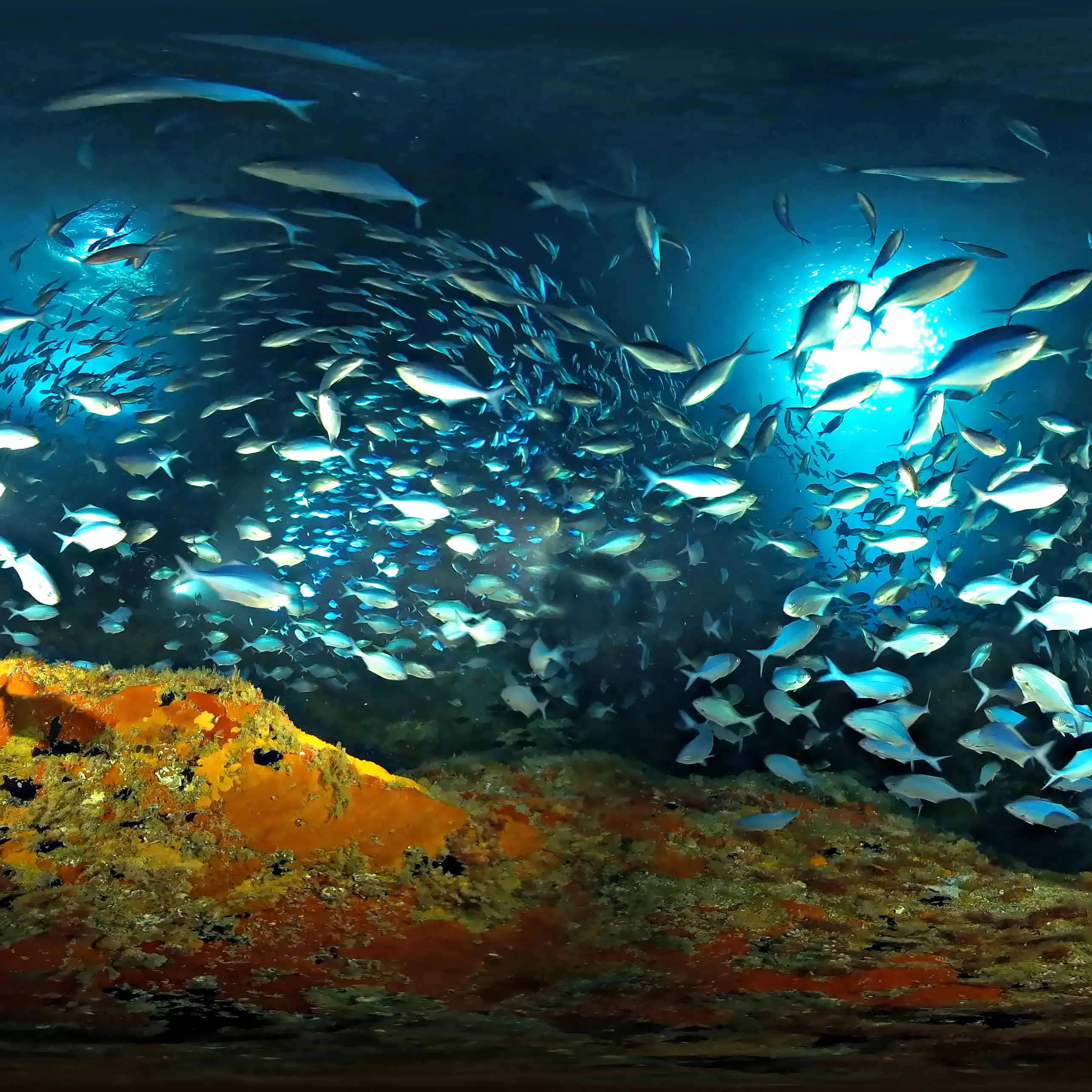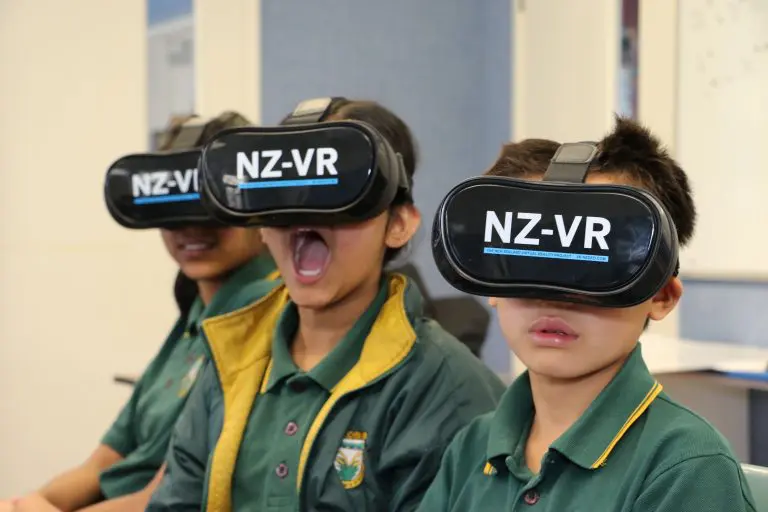Growing up, James Frankham would spend summers with his family at the bottom end of Waiheke Island. On any given day, he could look up or down the Waiheke Channel and see two or three ‘work-ups’ of kahawai.
The work-ups – where baitfish are rounded up into a ball and pushed to the ocean’s surface by their predators, like kahawai – would make the water appear to boil at the centre of the feeding frenzy.
But last summer, when Frankham – publisher of New Zealand Geographic – went out on to the Hauraki Gulf in search of one of those work-ups to capture on underwater video, he was left flabbergasted.
“We spent days roaming around the Gulf, covering miles and miles. We had someone on the roof of our boat trying to spot a work-up that we could film,” he says. “Over three weeks, we found just one. It was unreal.”
The dramatic decline in fish numbers in the Hauraki Gulf was the most shocking revelation for Frankham and his crew during six months of intensive production on the Hauraki Gulf phase of the NZ-VR Project – an underwater virtual reality experience to connect New Zealanders to their marine environment.
It’s been a challenging project, Frankham admits – both in mastering the highly technical art of VR video, and locating the talent.The Trust wanted to extend the reach of its environmental message to all young New Zealanders – and the best way was to engage them through the wonders of virtual reality technology. What they see then expands into learning resources that are compatible with the national curriculum.
“Finding pilot whales was always going to be difficult. They are big creatures, few and far between, and they have massive ranges. But we never expected it to be hard to find kahawai,” he says.
“I appreciate that this is anecdotal and not a scientific survey, but the population of fish in the Gulf has reduced far more than we anticipated.”
The Hauraki Gulf and its connecting waters are the focal point of this first phase of the NZ-VR project. New Zealand Geographic has a “wild dream” to eventually create a virtual experience of every biome in New Zealand—from mountain peaks to deep seas.
“My hope is that every New Zealander, off the back of this wider project, will have an experience of the natural world that will change their lives,” Frankham says. “I hope it changes hearts and minds, and leads to a sea change in people’s understanding of the natural world and their appreciation of it.”
The project began in earnest 18 months ago, after New Zealand Geographic sat down with the Sir Peter Blake Trust and the Pew Charitable Trusts – a global NGO working to protect the environment and support scientific research – to figure out the best way to get “more cut-through” with their conservation messages, particularly around ocean conservation.
“Ocean conservation suffers from a massive image problem, because no one can see or easily experience something that’s covered up by 30 metres of salt water,” says Frankham.
“Unless you experience something, how can you really care for it, when you don’t have the tools for empathy?”
Until now, Frankham says, the best way to generate that empathy for our ocean environment has been taking classrooms of kids to snorkel through marine reserves, like Goat Island north of Auckland, or through the media, with photographs and stories from the vast underwater realm.
“But a photograph is nowhere near as close to the experience you could have if you were out in the ocean. And virtual reality is now the best tool to recreate that experience,” Frankham says.
“Nothing will ever replace a real-life experience, but it’s very hard for people to access the marine environment. Very few people have been underwater, and only a tiny fraction of those have been underwater in a pristine marine ecosystem.

Frankham directed the video production, working alongside producer Lucy van Oosterom, a marine biologist and a Blake NIWA Ambassador in 2013, and award-winning photographer Richard Robinson. The project was funded by a Gulf Innovation Fund Together (GIFT) grant from Foundation North, and has also confirmed more funding from NZonAir that will extend production throughout the North Island.
Using 360-degree VR video, the small crew concentrated their filming on five underwater locations in the last 12 months.
To tell the story of the Hauraki Gulf and its inhabitants, they travelled north to the Three Kings Islands – off the top of the North Island – and Parengarenga Harbour, down to the Poor Knights and Goat Island, out to the edge of the Continental Shelf outside of the Gulf, and then inside the Gulf itself.
“Of course, marine organisms don’t respect the boundaries of the Hauraki Gulf Marine Park, and they’re affected by things well outside those boundaries. So the coverage has been wide and yet all connected to the Gulf,” Frankham says.
There were highs and lows during the project’s production, but the team was determined to capture the good and the bad within the Gulf to create a realistic picture of its health.
“Some of the pristine environments we’ve filmed have been mind-blowing. The huge underwater forests of sargassum seaweed and fish everywhere at Three Kings… it’s amazing to think that more of the Gulf could be like that if it was properly protected. That’s the great opportunity here,” says Frankham.
“But we also filmed sewage gushing out of overflow points into the harbour, and effluent pouring out of creeks into the Waiheke Channel. It was pretty saddening.”
One of Frankham’s highlights was filming dolphins in quite a unique way. Hatched from “a mad idea”, they built a contraption from $200 of aluminium, bolted it on to the bow of the boat and attached a 360 VR camera.
“We knew it had never been done before, and as soon as we put it in the water, we had dolphins surfing on the bow,” he says. “When you put the VR headset on, you’ve got dolphins swimming all around you. You pop out of the water every now and then, and you actually feel like a dolphin. It’s radical.”
The Sir Peter Blake Trust’s objective from the NZ-VR project was to deliver an immersive experience to schools, so students could see both the rich biodiversity below the surface of New Zealand waters, as well as the damage that’s been done to the ecosystem.
“We’ve struggled in the past to get any great reach with our environmental messaging, and delivering experiential learning at scale is traditionally very expensive” says the Trust’s head of community engagement, Kelly Bleakley, whose primary focus is to get the programme into schools. “This technology is an awesome way to reach a large number of young people in an impactful way with a message that educates and inspires them to care for the environment.
The free programme will be available to primary, intermediate and secondary schools nationwide from early next year.“We’ve been trialling the content in a number of schools in Auckland this year, and students have been blown away by the footage and love the VR technology. We show them what’s really happening out there in their ocean, and then focus on the actions that can be taken to protect it.”
Teachers will be able to sign up to two options. The first option is for schools in Auckland, where a travelling educator will take classrooms through a one-hour roadshow session, allowing students to experience the VR through headsets and learn what they can do to help the marine environment.
The second option is for schools nationwide. The Trust is creating teaching resources to accompany the video content, in both the science and social studies curriculum, especially in Year 9-10. “Any teacher nationwide can pick up the lesson plans, access the videos, and use them to educate their students,” Bleakley says.
And not every student will need to put on a headset to see the underwater world come to life. They can use the ‘Magic Window’ mode, which allows viewers to move their tablet or mobile phone around to glide through the water with a 360 degree view.
The Trust’s long-term plan is to have the educator travel to schools throughout the country, and create virtual reality vision of the marine environment in their areas.
- Experience all the NZ-VR videos at www.nzgeo.com/vr/
- Schools can access the teaching resources and register at www.blakenz.org/nz-vr
Underwater photos: New Zealand Geographic


